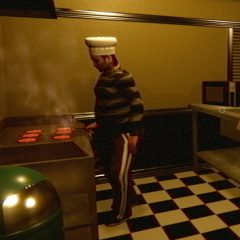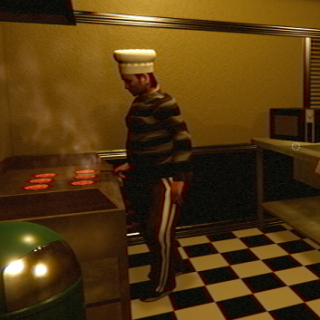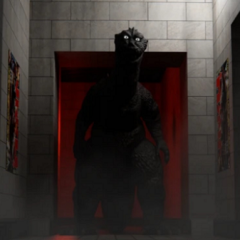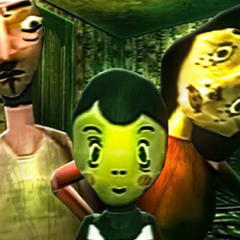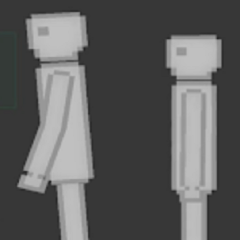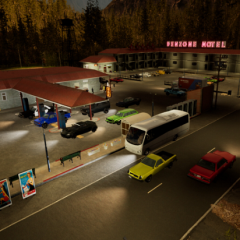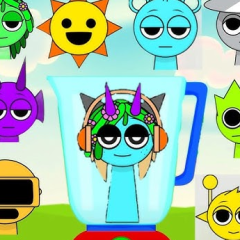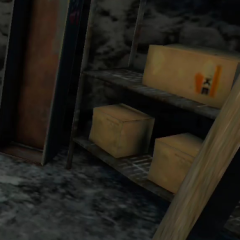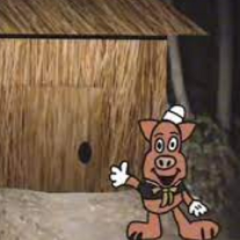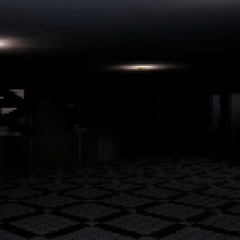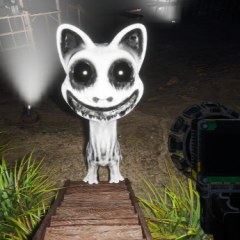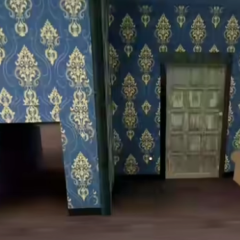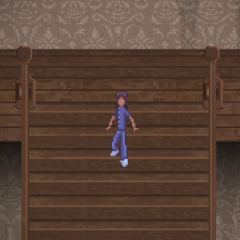True Nightmare Roadside Cafe is a first-person psychological horror game centered around a young girl named Mary, who works the late shift at an isolated roadside diner. The gameplay begins with quiet, repetitive tasks—serving food, cleaning tables, and restocking supplies. But as each night passes, the atmosphere shifts. Objects appear out of place, customers behave strangely, and the line between routine and something unknown begins to blur. The game focuses on slow-building tension rather than action, making the ordinary feel increasingly disturbing.
A Routine That Begins to Break
Each shift starts the same way. You unlock the door, check the appliances, and wait for the first customer. But small irregularities start to appear: the clock ticks slightly offbeat, the same customer returns night after night, or the lights flicker for a second too long. What seems like a simple job begins to feel more like a trap. Mary’s world doesn’t collapse all at once—it slowly shifts out of sync. Players are encouraged to notice these differences, question them, and decide whether to dig deeper or carry on as if nothing’s wrong.
Core Gameplay and Structural Elements
True Nightmare Roadside Cafe is built around tension through familiarity. There are no weapons, enemies, or combat mechanics. Instead, the game delivers fear through subtle design choices. Key gameplay elements include:
· Nightly tasks: food prep, cleaning, and interacting with guests
· Environmental changes that alter familiar spaces
· Optional exploration outside the diner during certain events
· Dialogue choices that reveal small story fragments
· A looping structure where each night builds on the last
Every detail matters. Something as small as a misplaced cup or a customer’s repeated phrase can signal that the world is shifting in quiet but dangerous ways.
Visuals, Sound, and Immersion
The game’s visuals use a grainy VHS filter that makes everything feel slightly unstable, as if you’re watching an old tape that’s slowly breaking down. The lighting is minimal and artificial, casting harsh shadows that hide more than they reveal. Sound design plays a central role—background noise hums constantly, punctuated by the clang of metal or the soft ring of a bell. When that sound stops or changes unexpectedly, the silence itself becomes threatening. These sensory elements combine to create a persistent sense of discomfort.
Atmosphere and Narrative Direction
True Nightmare Roadside Cafe doesn’t provide clear answers. It leaves players in the dark, letting them interpret Mary’s experience based on what they see and hear. Is the horror external, supernatural, or psychological? The game never says. Instead, it builds a narrative through small details, creating an atmosphere where players question everything. The progression is slow, deliberate, and deeply unsettling, rewarding players who pay close attention.

